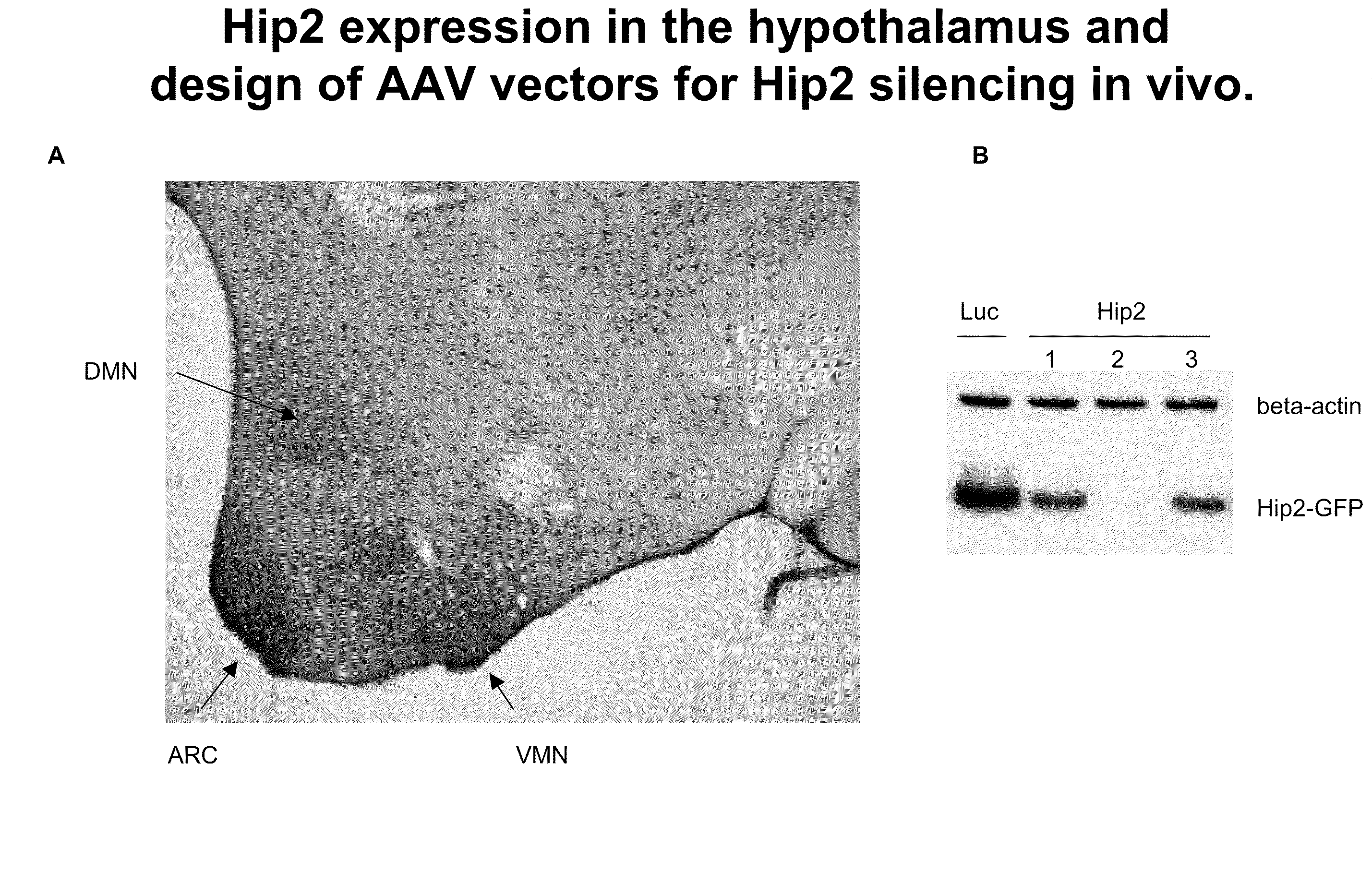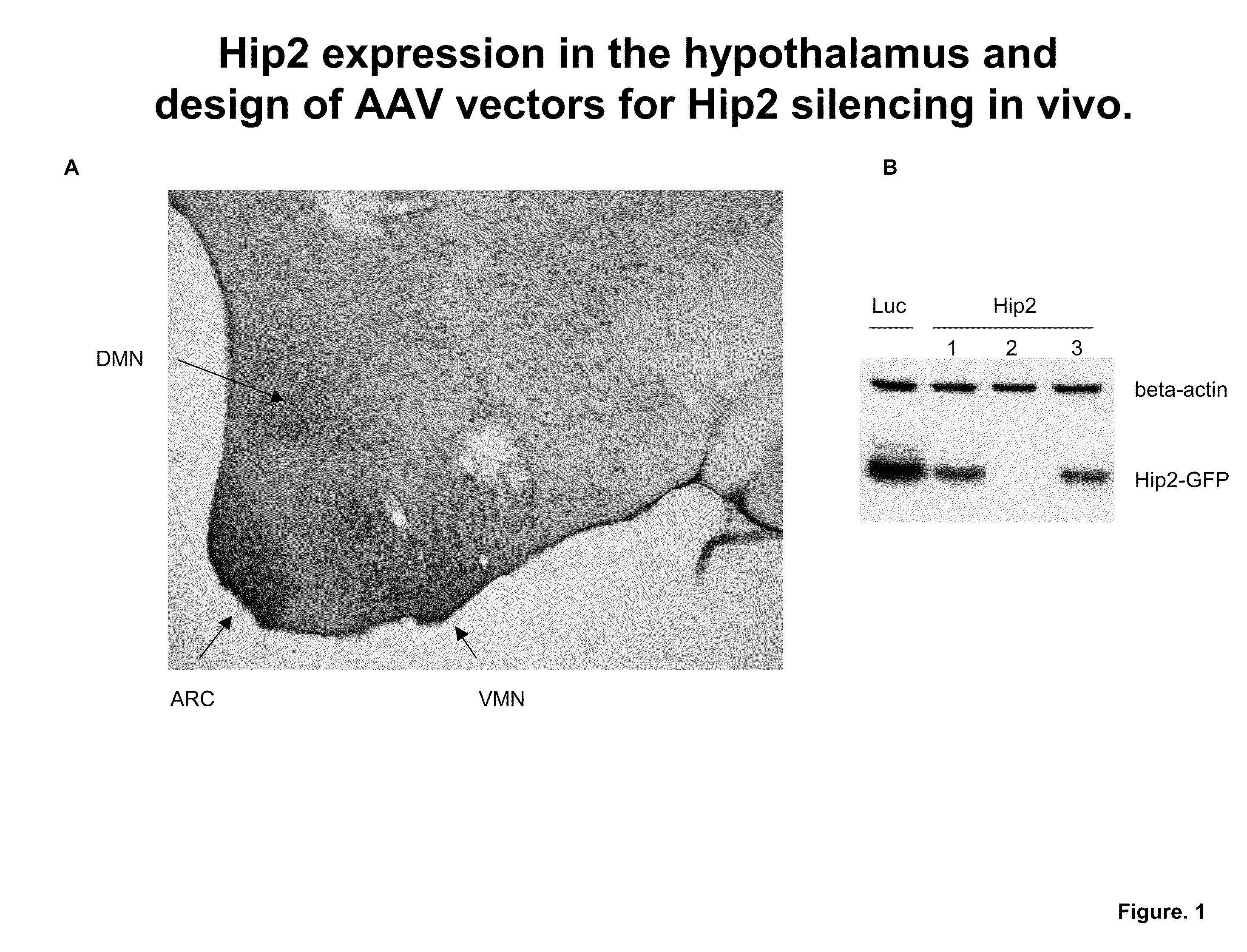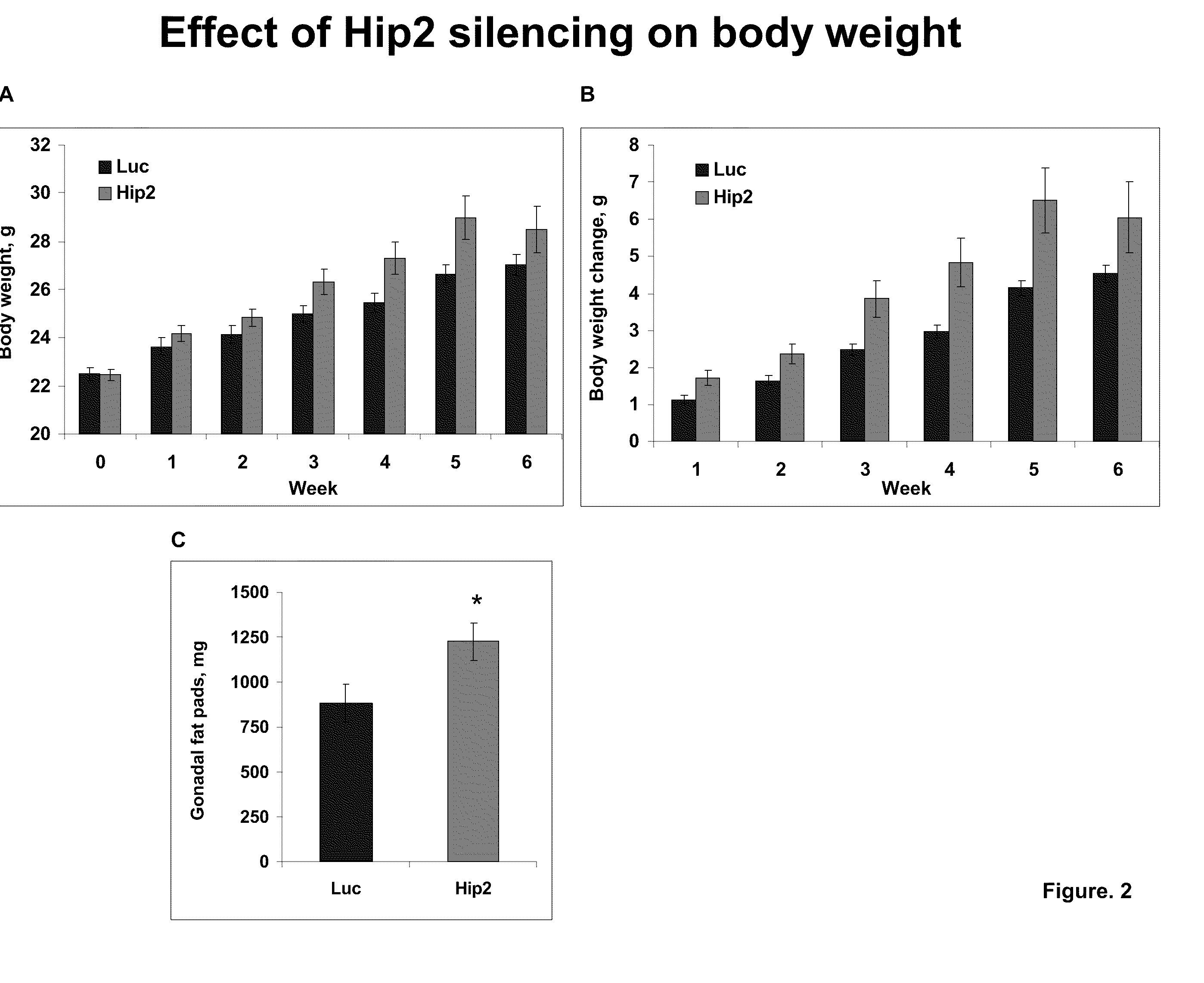Novel Gene Therapy Approach For Treating The Metabolic Disorder Obesity
a gene therapy and metabolic disorder technology, applied in the field of gene therapy, can solve the problems of obesity currently treated, limited success, increased risk of cardiovascular disease, stroke and diabetes, etc., and achieve the effect of increasing or decreasing the expression of therapeutic proteins
- Summary
- Abstract
- Description
- Claims
- Application Information
AI Technical Summary
Benefits of technology
Problems solved by technology
Method used
Image
Examples
example 1
Effect of Hip2 Silencing on Body Weight of Mice
[0098]Prior to experimentation, Hip2 expression was characterized in murine hypothalamus. FIG. 1A shows the wide expression pattern of Hip2, with highest levels observed in dorso-medial nucleus (DMN), the arcuate nucleus (ARC) and the ventro-medial nucleus (VMN).
[0099]Male mice were injected with AAV vectors encoding Hip2 specific small hairpin RNA's (shRNA). AAV vectors encoding luciferase specific shRNA's were used as controls. The vectors were delivered to the ventromedial nucleus (VMN) region of the brain. After several weeks of monitoring the mice, the animals were sacrificed and the level of Hip2 suppression was assessed. Brain tissue from the mice injected with AAV vectors encoding for three different Hip2-specific shRNAs or a luciferase control were analyzed by PCR for the ability to silence Hip2 gene expression. Of the three, one shRNA was able to drastically reduce the level of Hip2 present in the brain, as measured by PCR.
[01...
example 2
Effect of Hip2 Silencing on Cold-Induced Hypothermia
[0101]Male mice were divided into two groups, one group was injected with AAV vectors encoding for Hip2 shRNA while the other group was injected with AAV vectors encoding Luc shRNA. Mice were separated in cages according to group and placed in a room maintained at an ambient temperature of 22° C., or in cages placed in a room at 4° C. Mice were permitted access to food and water ad libitum (freely available), and measurements of core body temperature were made during the dark phase of the daily cycles. After 4 h at either 22° C., or at 4° C., the core body temperatures of the animals were recorded. The results are shown in FIG. 3. Animals maintained at 4° C. had lower core body temperatures than animals maintained at 22° C. At either temperature, the animals that had received injections of Hip2 shRNA had lower core body temperatures than animals in the control group. However, the core body temperatures of mice receiving Hip2 shRNA ...
example 3
Effect of Hip2 Silencing on Fasting-Induced Hypothermia
[0102]Male mice were divided into two groups, one group was injected with AAV vectors encoding for Hip2 shRNA while the other group was injected with AAV vectors encoding Luc shRNA. Mice from each group were either fasted for 24 h or allowed access to food ad libitum. For both the fasted and fed mice, access to water was allowed ad libitum. The measurements of core body temperature were made 2 h after the onset of the dark phase of the daily cycles. The results are shown in FIG. 4. The core body temperature was lower for animals that had been injected with the Hip2 shRNA versus control animals in both the fasted and fed groups. However, this effect was more pronounced for the animals that had fasted for 24 h prior to the measurements. This indicates that animals treated with Hip2 shRNA have a reduced ability to maintain core body temperature following fasting.
PUM
| Property | Measurement | Unit |
|---|---|---|
| temperature | aaaaa | aaaaa |
| body temperature | aaaaa | aaaaa |
| core body temperature | aaaaa | aaaaa |
Abstract
Description
Claims
Application Information
 Login to View More
Login to View More - R&D
- Intellectual Property
- Life Sciences
- Materials
- Tech Scout
- Unparalleled Data Quality
- Higher Quality Content
- 60% Fewer Hallucinations
Browse by: Latest US Patents, China's latest patents, Technical Efficacy Thesaurus, Application Domain, Technology Topic, Popular Technical Reports.
© 2025 PatSnap. All rights reserved.Legal|Privacy policy|Modern Slavery Act Transparency Statement|Sitemap|About US| Contact US: help@patsnap.com



